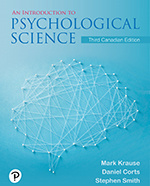Aging
in the
Church
How Social Relationships
Affect Health
Neal M. Krause
Templeton Foundation Press
West Conshohocken, Pennsylvania
Templeton Foundation Press
300 Conshohocken State Road, Suite 670
West Conshohocken, PA 19428
www.templetonpress.org
2008 by Neal M. Krause
All rights reserved. No part of this book may be used or reproduced, stored in a retrieval system, or transmitted in any form or by any means, electronic, mechanical, photocopying, recording, or otherwise, without the written permission of Templeton Foundation Press.
Templeton Foundation Press helps intellectual leaders and others learn about science research on aspects of realities, invisible and intangible. Spiritual realities include unlimited love, accelerating creativity, worship, and the benefits of purpose in persons and in the cosmos.
Typeset and designed by Glen Burris Book Design
Library of Congress Cataloging-in-Publication Data
Krause, Neal M. (Neal Miller)
Aging in the church : how social relationships affect health / Neal M. Krause.
p.; cm.
Includes bibliographical references.
ISBN-13: 978-1-59947-144-0 (pbk. : alk. paper)
ISBN-10: 1-59947-144-2 (pbk. : alk. paper) 1. Older peopleReligious life. 2. AgingReligious aspectsChristianity. 3. AgingSocial aspects. 4. Interpersonal relationsReligious aspectsChristianity. 5. HealthReligious aspectsChristianity. I. Title.
ISBN: 978-1-59947-241-6 (ebook)
[DNLM: 1. Agingpsychology. 2. Aged. 3. Empirical Research. 4. Interpersonal Relations. 5. Religion and Psychology. 6. Social Environment. WT 145 K91a 2008]
BV4580.K73 2008
261.832dc22 2008008875
Printed in the United States of America
08 09 10 11 12 13 10 9 8 7 6 5 4 3 2 1
Contents
Acknowledgments
Religion and Health: What We Know and What We Need to Do Next
Setting Boundaries on the Study of Church-Based Social Ties and Health
Why Research on Church-Based Social Ties and Health in Late Life Is Important
Overview of the Chapters That Follow
Conclusions
Conceptualizing and Measuring Informal Church-Based Social Support
Stress-Induced Psychosocial Deficits
Mobilizing Support from Fellow Church Members
Exploring the Benefits of Church-Based Social Support
Sharpening the Theoretical Underpinnings of Church-Based Social Support
Less Familiar Dimensions of Church-Based Social Support
Bringing Different Kinds of Stressors to the Foreground
Conceptual and Methodological Challenges
Conclusions
Identifying the Basic Nature of Close Companion Friends
Measuring Close Companion Friendships at Church
Linking Close Companion Friendships with Health and Well-Being
Close Companion Friends in Late Life
Close Companion Friends and Health: A Preliminary Empirical Examination
Conceptual and Methodological Challenges
Conclusions
Formal Relationships with the Clergy
Bible Study Groups and Prayer Groups
Formal Relationships in Church Volunteer Programs
Formal Assistance for the Homebound
Conclusions
Measuring Negative Interaction in the Church
Prior Research on Negative Interaction in the Church, Health, and Well-Being
Negative Interaction in the Church and Health: Examining Conceptual Linkages
Negative Interaction with the Clergy
Negative Interaction in the Church during Late Life
Conceptual and Methodological Challenges
Conclusions
A Strategy for Studying Social Structural Variations in Church-Based Social Ties and Health
Variations by Race: Studying Older African Americans
Gender, Church-Based Social Ties, and Health in Late Life
Church-Based Social Ties and Health: Variations by Socioeconomic Status
Conclusions
Core Religious Beliefs and Church-Based Social Relationships
General Conceptual and Methodological Challenges
Casting a Broader Net: Delving into the Dark Morass of Subjectivity
Acknowledgments
This work is truly a social product, and as a result, there are so many people to thank. It would be impossible to acknowledge them all here, but I wish to make five brief acknowledgments to recognize the individuals who were especially influential. First, I would like to thank all the older men and women who participated in the studies that form the backbone of this volume. What I have learned from them is beyond measure. Second, I would like to thank the National Institute on Aging for funding my research program on religion, aging, and health (RO1 AG014749; RO1 AG026259). I could never have brought my ideas to fruition without their generous support. Third, I am especially grateful to a number of colleagues whose work has had a substantial impact on my own thinking. Among them are Christopher G. Ellison, Harold Koenig, Kenneth Pargament, and Jeffrey S. Levin. Fourth, I would like to express my appreciation to the people at Templeton Foundation Press. I am indebted to them for giving me a free hand in writing this book. Their commitment to fostering creativity and their support of free inquiry made it possible for me to color outside the lines a bit. Finally, but by no means lastly, I wish to thank my wife, Maria, for the love and support she has consistently provided throughout my career. This book would never have been written without her support and encouragement.
Chapter 1
Social Relationships in the Church and Health
Problems and Prospects
The purpose of this book is to examine how social relationships that arise in church affect the physical and mental health of older men and women. A number of books have been written about other dimensions of religion and health, such as religious coping (Pargament 1997) and forgiveness (McCullough, Pargament, & Thoresen 2000), but this appears to be the first book that focuses specifically on the health-related consequences of different types of social relationships that are formed by older people in the church. But rather than merely reviewing and critiquing existing studies, the intent of this book is to strike out in a different direction by making a concerted effort to provide researchers with a concrete blueprint for moving forward work on church-based social ties and health. This is accomplished by developing a range of specific and testable hypotheses that link various types of church-based social ties with health and by providing well-developed survey measures that can be used to evaluate them. In the process, a number of methodological and conceptual problems are identified that must be overcome if further progress is to be made. The insights provided in this book arise from the authors extensive experience conducting the first nationwide survey that was devoted exclusively to the study of religion and health in late life. The seven years that it has taken to conduct this research and report the findings that have emerged from it have provided the opportunity for invaluable hands-on experience. When viewed at the broadest level, the intent of this book is to share the insights that were gleaned from this experience with other investigators.










